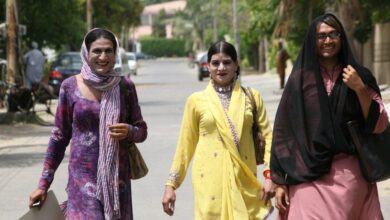Beyond the Screen: It’s Time to Bridge Pakistan’s Gender Digital Gap
Miran Rehmat

Pakistan’s digital landscape mirrors its societal disparities. The gender divide, a stark contrast in internet access and usage between men and women, is a prominent symptom. To foster inclusive and equitable growth, bridging this gap is essential.
The World Economic Forum’s 2024 Global Gender Gap Report laid bare the stark reality of Pakistan’s inequitable digital growth. The nation has slipped from 112th in 2006 to a disheartening 145th out of 146 countries. The decline is particularly acute in gendered economic participation, where Pakistan ranks among the lowest, trailing nations like Iran, Morocco and Sudan.
Financial inclusion for women in Pakistan paints a similarly bleak picture. Globally, estimates project that 65% of women have bank accounts compared to 72% of men. In Pakistan, a survey conducted by Karandaaz revealed only 13% of adult women have access to services offered by formal financial institutions with one-third found to be inactive users. This highlights a near-total reliance on male family members and acquaintances for financial matters.
Despite widespread mobile phone ownership in Pakistan, a gender digital divide persists. GSMA’s Mobile Gender Gap Report 2022 analyzed women in Pakistan to be 33% less likely than men to own a mobile handset and 38% less likely to have access to cellular internet services. A decrease in this probability can be powerful for women, boosting their chances of joining the workforce by 36%.
Our dynamic digital landscape is marred by a persistent gender digital divide. This disparity has significant implications, limiting women’s potential for growth. To bridge this chasm, authorities must prioritize gender equality in digital literacy access. The Pakistan Telecommunication Authority’s (PTA) Digital Gender Inclusion Strategy, a three-year plan launched this year, is a positive step towards addressing barriers that hinder women’s participation in the digital realm. Pakistan must also leverage mobile technology to empower women, enabling them to tap into the vast potential of e-commerce and allocate resources to support women-led technology start-ups.
Our digital gender divide is not an insurmountable challenge. With carefully crafted policies and decisive action, Pakistan can ensure that all its citizens, regardless of gender, benefit from the transformative power of technology and digital literacy. A digitally inclusive Pakistan is not just a desirable goal; it may be a crucial lifeline amidst our nation’s political, economic, and social challenges.





